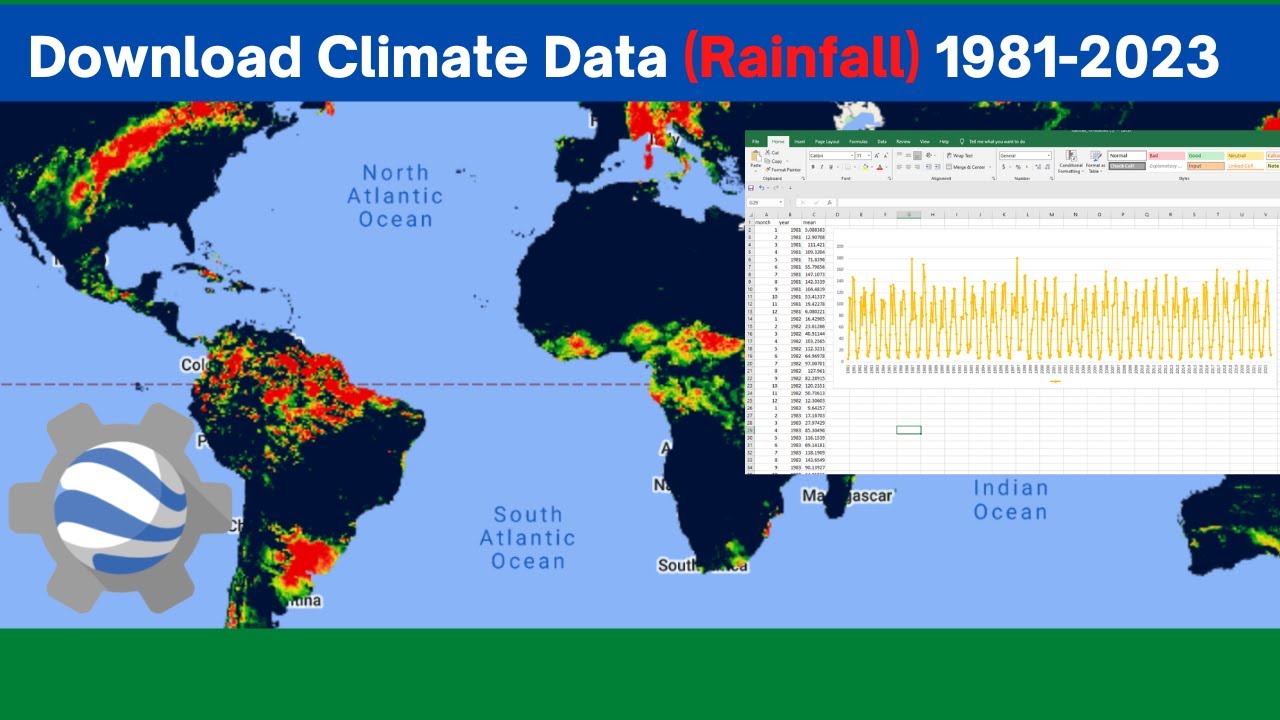Cara Menentukan Iklim Schmidt Ferguson
Summary
TLDRIn this tutorial, the presenter walks viewers through determining the climate type of a region using rainfall data. The focus is on calculating the number of dry and wet months, applying relevant formulas, and referencing a table to classify the climate. The script explains how to identify months with rainfall below and above 60mm, then demonstrates the process with an example. Viewers are encouraged to follow the steps and use the formula to determine the climate type for any region based on monthly rainfall averages. The video concludes with a summary of the process and a reminder to stay updated by subscribing.
Takeaways
- 😀 The script explains how to determine the climate type of a region based on rainfall data from January to December.
- 😀 It introduces the concept of 'wet' and 'dry' months, where wet months have rainfall above a certain threshold, and dry months fall below it.
- 😀 A key formula to calculate climate type is introduced: Q = (Number of dry months) / (Total number of months).
- 😀 The script emphasizes the importance of identifying wet and dry months accurately for the climate calculation.
- 😀 After calculating the Q value using the formula, it can be compared with a reference table to determine the climate type.
- 😀 The script demonstrates an example calculation where there are 2 dry months and 10 wet months, resulting in Q = 0.16.
- 😀 A Q value between 0.1 and 0.34 usually corresponds to a 'wet' or 'humid' climate type, based on the table.
- 😀 The approach is simple and can be applied to various regions to determine the climate by using their monthly rainfall data.
- 😀 The script also mentions that occasionally, there may be anomalies or adjustments when calculating the values.
- 😀 The purpose of the video is to help viewers understand how to apply this method to categorize climates based on rainfall patterns.
Q & A
What is the main focus of the video tutorial?
-The main focus of the video tutorial is to explain how to determine the climate type of a region based on rainfall data, specifically using average monthly rainfall and the number of dry and wet months.
What is the significance of the 'number of wet months' in the climate classification?
-The 'number of wet months' refers to the months where rainfall exceeds a certain threshold, indicating that the region experiences consistent rainfall. This helps determine whether the climate is wet or dry overall.
What do the terms 'dry months' and 'wet months' represent in the climate classification?
-In the context of climate classification, 'dry months' are those where the rainfall is below a specific threshold, while 'wet months' are those where rainfall exceeds a certain value, indicating a more humid and rainy period.
How is the climate type determined using the given formula?
-The climate type is determined by calculating the ratio of the number of dry months to the total number of months in the year. This ratio helps to classify the climate based on predefined thresholds in the climate classification table.
Why is the value of 0.125 significant in the context of the example provided?
-The value of 0.125 is the calculated ratio of dry months to the total months in the example. This value helps classify the climate as 'humid' or 'wet' according to the given climate classification table.
What is the role of the formula involving the 'number of dry months' and 'wet months'?
-The formula involving the 'number of dry months' and 'wet months' is used to calculate the ratio that helps to classify the climate as 'humid', 'moderate', or 'dry'. The ratio gives insight into the distribution of rainfall throughout the year.
How does the classification table help in determining the climate type?
-The classification table provides ranges of values for the ratio of dry to wet months, which are matched against the calculated ratio from the example. This helps to classify the climate into types such as tropical, arid, or temperate.
What does the term 'humid' imply in the context of the climate classification?
-'Humid' in the context of climate classification indicates that the region receives a significant amount of rainfall during the majority of the year, resulting in lush vegetation and a wet environment.
Why is it important to consider both 'wet' and 'dry' months when determining climate?
-Considering both 'wet' and 'dry' months is important because it gives a complete picture of the region's annual rainfall pattern. This helps to accurately determine whether the climate is predominantly wet, dry, or has periods of both.
What is meant by the 'number of months with rainfall less than 100 mm' in the script?
-The 'number of months with rainfall less than 100 mm' refers to the months where the region experiences minimal rainfall, contributing to the classification of dry months in the climate classification system.
Outlines

This section is available to paid users only. Please upgrade to access this part.
Upgrade NowMindmap

This section is available to paid users only. Please upgrade to access this part.
Upgrade NowKeywords

This section is available to paid users only. Please upgrade to access this part.
Upgrade NowHighlights

This section is available to paid users only. Please upgrade to access this part.
Upgrade NowTranscripts

This section is available to paid users only. Please upgrade to access this part.
Upgrade NowBrowse More Related Video

KLASIFIKASI IKLIM SCHMIDT - FERGUSON [ Belajar Geografi, Yuk! Eps 40 ] | Presentation Mode

Tutorial Membuat Peta Erosi Secara Spasial Menggunakan Arcgis dengan rumus USLE

MENGUBAH DATA TUNGGAL MENJADI DATA KELOMPOK (TABEL DISTRIBUSI FREKUENSI)

Download Climate Data (Rainfall) from 1981 - 2022 using Earth Engine API

Menentukan Mean, Median, dan Modus Data Kelompok

Text Classification Using BERT & Tensorflow | Deep Learning Tutorial 47 (Tensorflow, Keras & Python)
5.0 / 5 (0 votes)